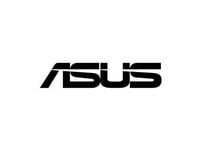Microsoft and ASUS have teamed up to launch a bold new chapter in portable gaming with the introduction of two handheld devices: the ROG Xbox Ally and the ROG Xbox Ally X. Officially revealed during the Xbox Games Showcase on June 8, 2025, these devices promise to blend the power of Xbox gaming with the versatility of Windows 11, delivering a seamless, immersive experience for players on the go this holiday season.
The announcement marks Microsoft's first official foray into dedicated handheld gaming hardware, a move that places it squarely in competition with established portable gaming giants like Nintendo and Sony. But these aren’t just any handhelds — they’re designed to provide a full Xbox experience fused with PC gaming flexibility, thanks to deep collaboration with ASUS’s Republic of Gamers (ROG) division.
The ROG Xbox Ally comes in two variants: the base model Ally and the more powerful Ally X. Both share a 7-inch, 1080p IPS display with a 120Hz refresh rate, FreeSync Premium support, and Corning Gorilla Glass Victus with anti-reflection coating, ensuring vivid visuals even in challenging lighting conditions. The devices sport contoured grips inspired by the Xbox Wireless Controller, designed to offer all-day comfort with redesigned palm rests and textured surfaces for a secure hold.
Under the hood, the base ROG Xbox Ally is powered by an AMD Ryzen Z2 A Processor, paired with 16GB of LPDDR5X-6400 RAM and a 512GB M.2 2280 SSD. Meanwhile, the ROG Xbox Ally X boasts the AMD Ryzen AI Z2 Extreme Processor, 24GB of faster LPDDR5X-8000 RAM, and a spacious 1TB SSD. This premium model also features impulse triggers — a hallmark of Xbox controllers — delivering nuanced haptic feedback that enhances immersion by simulating in-game sensations like road textures or the impact of gunfire.
Connectivity options are robust. Both devices include Wi-Fi 6E and Bluetooth 5.4, a 3.5mm combo audio jack, and microSD card readers supporting UHS-II cards (with the Ally X also supporting UHS-I via DDR200 mode). The Ally X further supports Thunderbolt 4 through its USB-C 4 port, opening the door for external GPU connections, a feature that could appeal to gamers seeking desktop-level performance on the go. Both models come with two USB-C ports supporting DisplayPort 2.1 and Power Delivery 3.0, enabling video output to external monitors or TVs.
Microsoft’s software integration is where these handhelds truly shine. Booting up either device launches users directly into a full-screen Xbox experience optimized for handheld play, designed to hide the complexity of Windows 11 and streamline gameplay. This interface minimizes background processes to dedicate more system resources to games, resulting in higher frame rates and smoother performance.
A dedicated Xbox button on the handhelds brings up the Game Bar overlay, providing quick access to settings, chat, and app switching — all navigable via buttons and joysticks without needing a touchscreen. Accessibility features familiar to Xbox console and Windows PC users are fully supported, alongside the Gaming Copilot, which offers real-time assistance and customization options.
Perhaps most exciting is the unified gaming library. The Xbox PC app aggregates games from the Microsoft Store, Battle.net, Steam, Epic Games Store, and other leading PC storefronts, allowing players to access their entire collection from a single interface. Xbox head Sarah Bond assured that every game showcased during the Xbox Games Showcase will be playable on the Xbox Ally, though it remains to be seen which games will run natively versus via cloud streaming or remote play.
Speaking of streaming, the devices support Xbox Cloud Gaming and Xbox Remote Play, enabling users to stream their Xbox Series X|S game libraries over Wi-Fi. Microsoft has also partnered with Roblox to bring the game natively to handheld for the first time and is collaborating with third-party developers on a Steam Deck-style program to highlight games optimized for handheld play.
Battery life has been a focus for both Microsoft and ASUS. The base Xbox Ally features a 60Wh battery, a 50% increase over the original ROG Ally, while the Xbox Ally X packs an 80Wh battery — among the largest found in handheld gaming devices today. Combined with software optimizations, Microsoft claims these devices drain one-third less power when idle or asleep, promising longer play sessions without frequent recharging.
Physically, the handhelds measure 290.8 x 121.5 x 50.7 mm, with the base model weighing 670 grams and the Ally X slightly heavier at 715 grams. Although heavier than some competitors like the Nintendo Switch 2 or PlayStation Portal, the ergonomic design and Xbox-inspired grips aim to offset any discomfort during extended play.
Microsoft and ASUS are also including a 65W charging stand with both models, further enhancing usability and convenience. Additionally, the devices support storage expansion via microSD cards and allow swapping internal SSDs, catering to gamers with extensive libraries.
Pricing, pre-order dates, and accessory details are yet to be announced, but the devices will initially launch in a broad range of markets including the US, UK, Australia, Canada, Japan, South Korea, and many European and Middle Eastern countries, with plans to expand availability further.
Shawn Yen, Head of Consumer Product at ASUS, highlighted the collaborative effort, stating, “This revolutionary partnership with Microsoft allowed us to forge a brand new device with ROG muscle and the soul of Xbox.” Roanne Sones, Corporate Vice President at Xbox, emphasized the goal of delivering “an authentic Xbox experience in a handheld form factor.”
With these devices, Microsoft is not only expanding its ecosystem beyond consoles and PCs but is also embracing the growing trend of mobile and cloud gaming. By integrating Windows 11 and a full Xbox experience into a portable form, the ROG Xbox Ally series could redefine how and where gamers play.
As the holiday season approaches, anticipation builds for the arrival of these powerful handhelds, which promise to bring the best of Xbox and PC gaming together in a sleek, ergonomic package. Whether gamers will embrace this new entrant in the handheld market remains to be seen, but the combination of hardware muscle, software polish, and ecosystem integration certainly sets a high bar.



